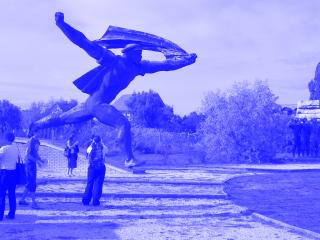Topic
Heritage without Inheritors
The eastern half of Europe is a clearer example than almost any other part of the world that cultural goods that are at first pushed aside as the relics of an unwelcome past can with time be adopted as heritage. The case studies examine these processes, drawing a line from the 19th century to the present.

Heritage without inheritors: Cultural assets in eastern Europe between destruction, marginalisation and appropriation
For something to become a heritage, someone must understand themselves as an inheritor. Conversely, this means: if no inheritors exist, buildings, art works and other material remnants become mere relics of the past.
Europe’s eastern half offers a particularly clear example of how, over several centuries, cultural legacies can shift from being perceived as unwelcome relics to being adopted as heritage. This research focuses on the diversity and development of attitudes and practices surrounding once-unloved traces of history – ranging from destruction, suppression and marginalisation to pragmatic repurposing and redesigning, from political reframing and ideological appropriation to protection in the name of universal values. It investigates not just how societies have physically treated cultural assets, but also how they have adopted them through art and literature, as well as the activities of civic initiatives and international organisations.


